Although people are sick of “best of” lists by now, especially when you throw in “best of the decade” lists, I always wait until the end of the year before posting my favorite books of the year. Given that I tend to do a lot of reading over the holidays, I fear that if I do it too early there’s a chance I’ll miss THE book. That didn’t happen this year but, hey, you never know.
So, as if anyone really cares, here’s my thoughts on the best books I read in 2009. Once again, there is a category specifically for books published before this year that qualify for a “best of” list.
BEST NOVEL
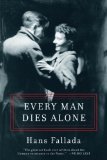 When I read Hans Fallada’s Every Man Dies Alone, I knew there was something about it. In fact, my review started: “It’s what every reader longs for but experiences all too rarely. Just a few pages into a book and you realize there’s something special in your hands. German author Hans Fallada’s Every Man Dies Alone is just such a book.”
When I read Hans Fallada’s Every Man Dies Alone, I knew there was something about it. In fact, my review started: “It’s what every reader longs for but experiences all too rarely. Just a few pages into a book and you realize there’s something special in your hands. German author Hans Fallada’s Every Man Dies Alone is just such a book.”
Originally published in Germany in 1947, Melville House Publishing brought us this wonderful translation by Michael Hofman. The book, based on the true story, tells of a married couple who begin dropping postcards containing anti-Nazi and anti-Hitler messages throughout Berlin following the death of their son in World War II. These actions are nowhere near those of industrial or military sabotage or armed resistance. That doesn’t change the fact that, as Primo Levi says in a front cover blurb, this is the “greatest book ever written about German resistance to the Nazis.”
I was so impressed with Fallada that I read two more of his works during the year. Even though I enjoyed and was drawn in by The Drinker, a novel about a small town businessman’s descent into alcoholism and its destruction of his life, it probably suffered a bit simply because I read it after Every Man Dies Alone, which created a tough bar. Somewhat ironically, Fallada wrote the book in 1944 while confined in a mental institution following a drunken altercation with his ex-wife. Little Man, What Now?, first published in 1932 in the midst of a worldwide depression, was my least favorite of the three. It well portrays Germany between the wars and life in the midst of economic crisis but perhaps the subject is just not as “sexy” as those of the other two books.
Translated literature also makes up the “honorable mention” list. I was a big fan of Ninni Holmqvist’s The Unit. Although arguably sci fi, this is a work that even those who disdain genre fiction would and did appreciate. This tale of a near future society in which many women 50 and older and men 60 and older and deemed “dispensable” and end up residing in a “Unit for Biological Material,” where all their needs are provided for. Gender and the value of art and literature are just two of the topics the book explores. Fortunately, Holmqvist’s novel, written in 2006 and first translated into English this year, avoided a “just SF” label, garnering it broader attention than it might otherwise have received.
 Finally, Jorge Volpi’s Season of Ash: A Novel in Three Acts is an ambitious, sweeping work that tells a history of much of the 20th Century through three female characters. Ultimately, the book seems a bit too epic as Volpi brings into play major events that don’t really impact the story. The result is that the characters tend to become mechanisms for whom momentous world events are a backdrop and we are left wondering it is as much a recounting of events as a tale is about the characters. Even though while Volpi’s reach exceeds his grasp, there is something to be said for the effort he makes and the way in which he does it.
Finally, Jorge Volpi’s Season of Ash: A Novel in Three Acts is an ambitious, sweeping work that tells a history of much of the 20th Century through three female characters. Ultimately, the book seems a bit too epic as Volpi brings into play major events that don’t really impact the story. The result is that the characters tend to become mechanisms for whom momentous world events are a backdrop and we are left wondering it is as much a recounting of events as a tale is about the characters. Even though while Volpi’s reach exceeds his grasp, there is something to be said for the effort he makes and the way in which he does it.
This isn’t to say there wasn’t any decent fiction from American writers this year. It’s just that it seemed to me that these foreign works stood out a bit more. Or what is perhaps more likely, I just didn’t happen to read the best of American fiction this year.
NONFICTION
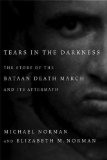 Perhaps I should preface this by saying that, despite what’s on the list, I’m not addicted to or even a huge fan of books about war. But this year’s nonfiction releases produced a crop of tremendous books dealing with that subject. In fact, it’s so hard for me to choose between Michael and Elizabeth Norman’s Tears in the Darkness: The Story of the Bataan Death March and Its Aftermath and David Finkel’s The Good Soldiers that I’m going to call them both the best nonfiction I read this year.
Perhaps I should preface this by saying that, despite what’s on the list, I’m not addicted to or even a huge fan of books about war. But this year’s nonfiction releases produced a crop of tremendous books dealing with that subject. In fact, it’s so hard for me to choose between Michael and Elizabeth Norman’s Tears in the Darkness: The Story of the Bataan Death March and Its Aftermath and David Finkel’s The Good Soldiers that I’m going to call them both the best nonfiction I read this year.
Husband and wife Michael and Elizabeth Norman spent years researching and interviewing for Tears in the Darkness. The result is a masterful exploration of the Bataan Death March. What makes it so impressive is that while the book provides a broad picture and understanding of the Death March and the circumstances and events that led to it, they do so in large part through the eyes of one Death March survivor, thereby making the story much more personal. Considering the subject, Tears in the Darkness is highly readable and certainly will long stand as not only one of the leading works on its subject but an exemplar for military history for the average reader.
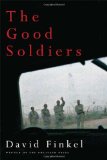 In The Good Soldiers, Finkel takes us inside an Army battalion as it trains for, serves during and returns from the so-called “surge” in Iraq between January 2007 and June 2008. As we meet the soldiers and their commanders, we also see the effect the war has, the difficulties they face and the toll it takes on them and their families. This is about as close as any outside, objective observer may come to telling the story of the “boots on the ground” experience of the “average” American solider in Iraq. And it isn’t just what happens in Iraq. Some of the scenes from the VA hospital in which some of the unit’s severely wounded end up are wrenching. While told in large part from the inside due to eight months Finkel spent with the unit, the fact it comes from a basically objective observer makes it that much more insightful.
In The Good Soldiers, Finkel takes us inside an Army battalion as it trains for, serves during and returns from the so-called “surge” in Iraq between January 2007 and June 2008. As we meet the soldiers and their commanders, we also see the effect the war has, the difficulties they face and the toll it takes on them and their families. This is about as close as any outside, objective observer may come to telling the story of the “boots on the ground” experience of the “average” American solider in Iraq. And it isn’t just what happens in Iraq. Some of the scenes from the VA hospital in which some of the unit’s severely wounded end up are wrenching. While told in large part from the inside due to eight months Finkel spent with the unit, the fact it comes from a basically objective observer makes it that much more insightful.
Deserving of at least honorable mention is Jon Krakauer’s Where Men Win Glory: The Odyssey of Pat Tillman. I wouldn’t call it the best of Krakauer’s work. His exploration of the military cover-up following Tillman’s death is damning. But more of an accomplishment is that Krakauer allows us to get a better grasp of Tillman himself. I, for one, came away overwhelmingly impressed by Tillman, a man with far deeper and richer character than the dumb jock blinded by patriotism I had assumed him to be.
BOOKS I WISH I’D READ THE YEAR THEY WERE RELEASED
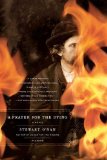 I’ve made it a practice of limiting my “best of” lists to works first released during the course of the year. A couple years ago I discovered that the limitation excluded some of my favorite books each year. As a result, this category was created so I could point out excellent books that I missed in prior years and which others may have also. And although it has nothing to do with their content, the commonality between the two books in this category, other than both being a decade or more old, is that they are also among the shortest I read this year, coming in at roughly 200 pages each.
I’ve made it a practice of limiting my “best of” lists to works first released during the course of the year. A couple years ago I discovered that the limitation excluded some of my favorite books each year. As a result, this category was created so I could point out excellent books that I missed in prior years and which others may have also. And although it has nothing to do with their content, the commonality between the two books in this category, other than both being a decade or more old, is that they are also among the shortest I read this year, coming in at roughly 200 pages each.
Stewart O’Nan’s novel A Prayer for the Dying was first released in 1999, three years after he was called one of America’s best young novelists. In reading a 10th anniversary release of the book this year, I found that it may have justified that decision. The book, told in the infrequently used second person singular, it is equally disturbing and fascinating. Its protagonist, Jacob Hansen — the sheriff, undertaker and part-time preacher in post-Civil War Friendship, Wisc. — could be considered the equivalent of Job in a Biblical fable. His various roles in the community are all taxed as he struggles to deal with a diphtheria plague and raging fire that are wreaking havoc on his community, his friends and his family.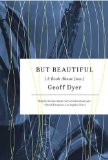
First published in 1991, Geoff Dyer’s But Beautiful: A Book About Jazz may actually live up to its billing as perhaps “the best book ever written about jazz.” In fact, it struck me as a literary version of jazz. Comprised of a series of essays on specific jazz musicians ranging from Thelonius Monk to Charlie Mingus to Chet Baker, Dyer calls his work “imaginative criticism.” With photos providing the base inspiration, the s essays combine fact, anecdote, fiction and impressionistic evaluation. Each seems to come closer to helping the reader get an idea of the mind of a jazz musician than anything other than the musician’s music and performances.
…the civilian population out in the streets and factories never amounted to anything compared to the Party. The Party was everything, and the people nothing.
Hans Fallada, Every Man Dies Alone








Interesting list! Here is mine